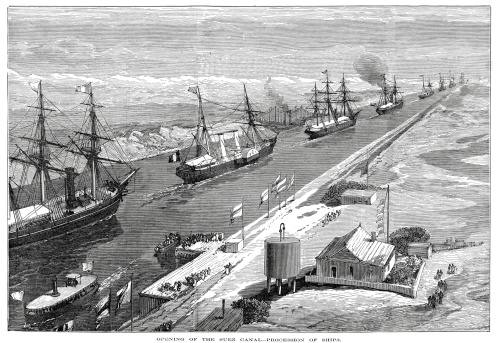Market Update
We are seeing a bit of a mixed/subdued start to the week. In terms of news over the weekend, there has not been anything of particular importance for the macro-outlook aside from reports that the Ever-Given tanker, which has been blocking the Suez Canal for over a week, is close to being freed. Crude oil markets saw some minor downside during the Asia Pacific session which may have had something to do with this news (the blockage had been seen by some as an impediment to crude oil supply), but this downside has since been reversed and crude is back in the green; WTI is up more than 1.0% to above $61.50, having reversed from sub-$59.50 overnight lows.
In terms of other asset classes, US equities have pulled back a little from a late surge at the end of last Friday’s US session; S&P 500 (e mini) futures point to a modestly negative open, but with index futures trading in around the 3950 mark, the index is still set to open pretty close to record levels. Meanwhile, European equities are mixed, US and European government bond markets are little moved (the US 10-year yield is around 1.65%), industrial metals are mixed and precious metals are a little softer though gold continues to trade within recent ranges in the $1720s.
The markets lack of conviction this morning is not really very surprising given key risk events to consider coming up this week. Firstly, participants will have to navigate through quarter-end rebalancing, which could result in choppy price action across asset classes over the coming three days. Moreover, US President Joe Biden will be announcing details on his administration’s proposal for the next round of fiscal stimulus on Wednesday; White House Press Secretary Psaki said that the President wants to split the “build back better” package into two separate proposals, the first of which will focus on infrastructure. Prior reports have touted the price tag of the total build back better package at as high as $4T in spending over the next four years and a hike in corporation tax is being touted as a means to help pay for it.
Meanwhile, US March ISM manufacturing PMI is out on Thursday and the official March labour market report is out on Friday, both key data releases – note that the jobs report is out on Good Friday and markets will be closed in the US and Europe, thus it will be unusually difficult to gauge the markets’ reaction to the data. Some have criticized the US Bureau of Labour Statistics for not postponing the release until the following week. Either way, there may be some nerves about the release triggering heightened levels of volatility and participants may feel under more pressure than usual to position on Thursday ahead of the release.
Finally, another key event this week will be the OPEC+ meeting on Thursday. Recent higher than usual levels of crude oil market volatility might well continue heading into the meeting as various OPEC+ sources leak the varied viewpoints of cartel members going into discussions. Most agree that another hike in output at this point is unlikely given 1) demand concerns in Europe and elsewhere as a result of the return to lockdown and 2) the recent sharp drop in prices from monthly highs (WTI currently trades more than 13% below its March high of just under $68.00) – OPEC sources said last Wednesday that a rollover of current production levels is the most likely outcome.
Pandemic Update
In terms of the latest on the pandemic front; the trajectory of Covid-19 infections in the US continues to look a little concerning, with the 14-day change in daily the seven-day moving average of daily cases up 15% and the rate at which the total number of hospitalised patients is falling slowing to just -5% in the last 14 days – the hope is that with the vaccine rollout having gone well and given the most vulnerable US adults at least some protection against the virus, the spike in infections will mostly be within the younger, healthier and less likely to be hospitalised/die population.
Meanwhile, Europe is still in lockdown/tilting towards tougher restrictions rather than easier restrictions; German Chancellor Merkel is reportedly threatening the use of federal law to clamp down on lenient regions given that she is not convinced that the current restrictions in the country will be enough to stop a third wave of the virus, which some European health officials fear could be the worst wave of the virus yet. In the UK, the news is a little more upbeat, with government ministers talking about the arrival of the Moderna vaccine later in the month and talk about booster shots (specifically aimed at protecting against variants) for the over 70s from September. However, UK press has been making a bit of a fuss about how the presence of variants in the country could push back the June 21st date, when practically all Covid-19 restrictions are supposed to be lifted by, back a little, something which is not great news, but equally ought not to present a massive impediment to the economy (most restrictions will have already been lifted by then anyway).
G10 FX
GBP is outperforming in the G10 this morning as the UK enters stage two of the roadmap out of lockdown (people have some more outdoor freedoms), although a more substantial easing of lockdown awaits on the 12th of April, when non-essential retail will be permitted to reopen. GBPUSD has rallied back above the 1.3800 level this morning and is eyeing a move towards 1.3850, with some market commentators also citing an easing of supply concerns as government officials talk of the arrival of batches of the Moderna vaccine over the coming days.
Elsewhere, things are much more subdued; the DXY is trading within recent ranges 92.60s-92.90s ranges, a reflection of the fact that EURUSD is rangebound just to the south of the 1.1800 level and USDJPY is rangebound just above 109.50; all remain fairly close to multi-month extremes and many remain bullish on USD given the comparatively better growth outlook in the US amid its good vaccine rollout and the large amount of fiscal stimulus.
In terms of other G10 currencies, AUD and NZD are flat on the day versus the US dollar, with the Aussie fending off back news regarding trade with China (China has put tariffs of between 100-200% on Aussie wine) and despite news of a snap lockdown in Brisbane to address some Covid-19 cases. AUDUSD is trading just under 0.7650 and NZDUSD is testing resistance at 0.7000. The Loonie, meanwhile, is a tad weaker on the day versus the buck, but USDCAD has recently fallen back under the 1.2600 level aided by a recovery in crude oil markets.
The Day Ahead
Things are very quiet in terms of the calendar this Monday, though there will be some focus on comments from the most recent Fed appointee Chris Waller. Focus will be on potential month-end rebalancing flows, the usual news regarding the pandemic, plus any leaks to do with the coming OPEC+ meeting of Biden’s stimulus announcement.




